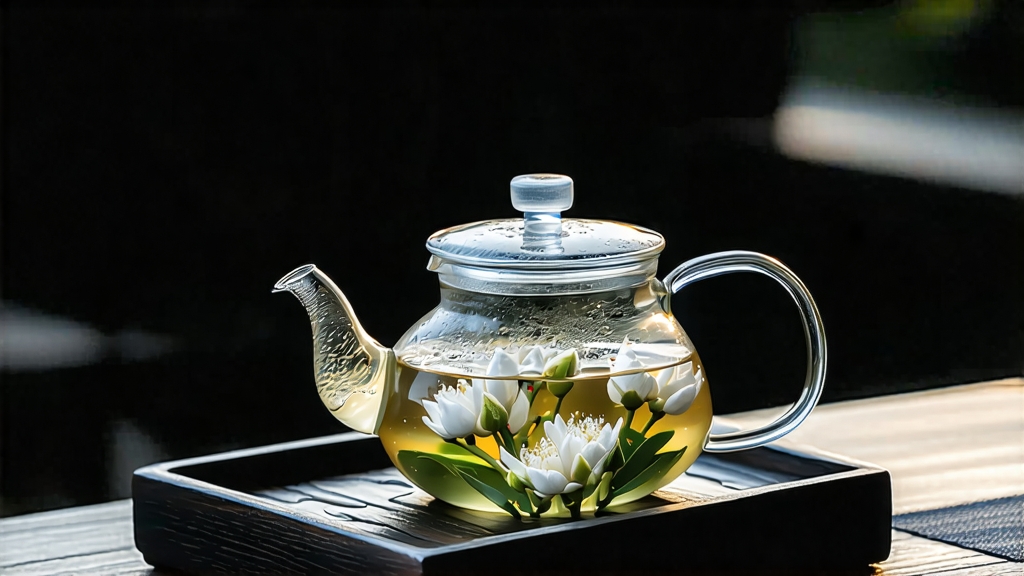
Among the six major families of Chinese tea, white tea is the least theatrical yet the most haunting: it is simply picked and dried, allowing time, air and subtle oxidation to finish what the leaf began in the mountains. Within this minimalist spectrum, no expression is purer or more coveted than Fuding Silver Needle—Bai Hao Yin Zhen in Mandarin—whose name translates literally to “white-haired silver scepter.” Composed exclusively of unopened leaf buds, the tea resembles a cache of slender ivory needles, each sheathed in silvery down that catches light like frost. To understand China’s white-tea renaissance now sweeping cafés from Brooklyn to Berlin, one must begin with this single origin, single grade, single season tea that has been quietly revered for almost a millennium.
Historical whispers place Silver Needle’s birth during the Song dynasty (960-1279), when imperial tribute lists first recorded “white tea” from the northeast coast of Fujian. Yet it was not until the mid-19th century that merchants in Fuding county standardized the plucking rule—only the plump spring bud, no leaf—creating the visual metaphor that still defines the category. Export figures from the port of Fuzhou show Silver Needle sailing to Singaporean pharmacies and London curiosity shops by 1890, marketed as “Chinese Down Tea” and prescribed for everything from scurvy to heart palpitations. While black teas dominated the maritime trade, white buds occupied a niche of medicinal mystique, wrapped in silk inside lacquered tins. After 1949 the tea largely disappeared from Western catalogues; state-run factories prioritized bulk green and black for hard-currency earnings. The revival began in 2003 when European organic certifiers arrived in Fuding, lured by stories of a tea that required no pesticides because the bud’s fuzzy coat secreted natural antifungal agents. Within a decade Silver Needle had become the gateway drug for specialty tea converts, its price per gram surpassing that of first-flush Darjeeling.
Fuding lies on the 27th parallel north, the same latitude as the Azores and subtropical Florida, yet the East China Sea moderates temperatures while mist-cloaked mountains trap moisture. Red and yellow granitic soils, rich in quartz and lightly acidic, force the tea bushes—predominantly Fuding Da Bai and Da Hao cultivars—to send deep roots, concentrating amino acids in the dormant bud. The critical harvest window spans five to ten days around Qingming festival (early April) when overnight temperatures hover at 12 °C and midday peaks reach 20 °C. Buds plucked at this moment contain the highest ratio of L-theanine to catechins, giving later infusions their signature honeyed calm rather than grassy bite. Experienced pickers work with thumbnails only, snapping the stem exactly one millimeter below the base to avoid the woody node that can introduce bitterness; a full kilogram of finished tea demands roughly 30,000 buds, all picked before ten o’clock so that dew does not lengthen withering time.
Processing Silver Needle is less a recipe than a weather forecast. The buds are spread on bamboo trays called “water screens” and left in a shaded pavilion with latticed walls; here gentle cross-flow air wicks away moisture while enzymes initiate a slow oxidation no hotter than 28 °C. No rolling, no pan-firing, no shaking—just the patience to wait forty-eight to sixty hours until the bud’s internal moisture drops from 75 % to 20 %. Mastery lies in reading the leaf: when the down turns from bright silver to a muted pewter and the bud snaps rather than bends, the tea is rushed to a charcoal-warm chamber for a final desiccation at 40 °C, low enough to preserve endogenous enzymes yet hot enough to fix the aroma. Unlike green tea’s kill-green step, this finish leaves a living residue; Silver Needle will continue to mellow for decades, developing date and marzipan notes if stored below 65 % relative humidity.
Western drinkers often confuse Silver Needle with other white grades—White Peony (Bai Mu Dan), Gong Mei, Shou Mei—but the distinction is botanical, not stylistic. Only the bud qualifies as Silver Needle; once the first two leaves accompany the shoot the tea becomes White Peony, and later, larger leaves render Gong Mei or Shou Mei. Within the needle grade itself micro-lots are differentiated by cultivar, elevation and withering style. High-elevation needles from Taimu Mountain